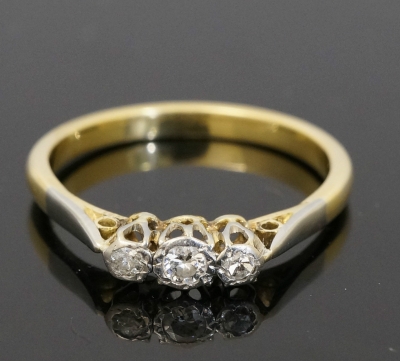

Pasteurization is defined as the process of heating milk to a particular temperature and holding it at that temperature for a particular time till the pathogenic (disease causing) micro-organisms are destroyed causing minimum change in composition flavour and nutritive value of milk.
High temperature short time (HTST) pasteurization at 71.7 {+0} C for 15 seconds is the most common method of pasteurization. Pasteurization conditions are not sufficient to destroy thermo-resistant spores (reproductive part of microorganisms). Pasteurized milk has to be refrigerated.
Sterilization is a more severe thermal process where milk is subjected to temperature of about 135 {+0} C for few seconds followed by aseptic (free of micro-organisms) packaging. Milk processed in this manner is termed as ‘commercially sterile’, but it is not necessarily free of micro-organisms.
These micro-organisms, which survive heat treatment, are unlikely to proliferate during storage and cause spoilage to the product.
However, spores are destroyed during sterilization. Sterilized milk has longer shelf-life even at room temperature. Nutritional losses in sterilization are more compared to pasteurization.
Pasteurization is one of the methods of preservation of products such as milk, alcohol beverages etc. at higher temperatures. The process of heating of the product (milk or beverage) to a controlled temperature (usually below 100 {+0} C) to enhance the keeping quality and to destroy harmful microorganisms is known as pasteurization.
There are two methods of pasteurization (of milk) in general use. One is low temperature holding (LTH) method in which milk is heated to 62.8 {+0} C (145 F) for 30 minutes in commercial pasteurizers (or) large closed vats which are heated by steam coils, hot water jackets etc.
The other method (i.e.) high temperature short-time (HTST) method in which the milk is heated to 71.7 {+0} C (161 F) for 15 seconds. The heating is accomplished by electricity (or) hot water and requires a heat exchange system, which preheats raw, cold milk and cools the hot pasteurized milk.
Pasteurization does not sterilize the products but kills those organisms that grow most readily at low temperatures. The surviving organisms must be kept from multiplying by constant refrigeration.
Pasteurization is sterilization interpolated with a subtle nuance in the process conditions and hence in the final result as well.
Pasteurization is named after the great French chemist Louis Pasteur, is the process of partial sterilization, confined only with the killing of pathogens.
The subject is heated to temperature below its boiling point (usually less than 100 {+0} C) and held at that temperature for a particular time period, with the aim of killing only the pathogens.
The time-temperature combination is decided based on the heat resisting capability of the target micro-organism and the nature of the subject. For instance milk is heated to 73 {+0} C & held for 15 seconds, to destroy Coxciella burnetti and Mycobacterium tuberculosis, which are the target micro-organism.
Sterilization is extended pasteurization where the subject is heated above the boiling point and held for a particular time period to destroy all the microorganisms. The temperature is usually above 100 {+0} C.

 Ornaments could be made of pure gold but would get easily pressed out of shape. This is because gold is a soft metal, though it is heavy.
Ornaments could be made of pure gold but would get easily pressed out of shape. This is because gold is a soft metal, though it is heavy.




 A soap molecule is made up of 2 parts - a long hydrocarbon part and a short ionic part containing - COONa+ group. The soap molecule is said to have a tadpole structure.
A soap molecule is made up of 2 parts - a long hydrocarbon part and a short ionic part containing - COONa+ group. The soap molecule is said to have a tadpole structure.
 Zeolite is used in the purification (more correctly softening) of water. Water in some localities contains salts of Calcium, Magnesium and Iron present in the earth. Such water finds it ‘hard’ or difficult to lather with ordinary washing soaps. This is because these salts react with the sodium compounds in soap causing wastage.
Zeolite is used in the purification (more correctly softening) of water. Water in some localities contains salts of Calcium, Magnesium and Iron present in the earth. Such water finds it ‘hard’ or difficult to lather with ordinary washing soaps. This is because these salts react with the sodium compounds in soap causing wastage.

 Water contains dissolved salts of calcium, magnesium and often iron in the form of bicarbonates, chlorides and sulphates present in the Earth's crust. When such water is heated, the bicarbonates of calcium and magnesium decompose evolving carbon dioxide and leave behind sparingly soluble carbonates.
Water contains dissolved salts of calcium, magnesium and often iron in the form of bicarbonates, chlorides and sulphates present in the Earth's crust. When such water is heated, the bicarbonates of calcium and magnesium decompose evolving carbon dioxide and leave behind sparingly soluble carbonates.
 Potassium cyanide when consumed causes death by gradually arresting the supply of oxygen to our body cells by forming stable complexes with hemoglobin (present in the blood) and cytochrome (a protein which helps in the respiration of the cells) and depriving them of their capacity to transport or exchange oxygen.
Potassium cyanide when consumed causes death by gradually arresting the supply of oxygen to our body cells by forming stable complexes with hemoglobin (present in the blood) and cytochrome (a protein which helps in the respiration of the cells) and depriving them of their capacity to transport or exchange oxygen.
 Formation of a solution is a physico-chemical process. When two substances mix to form a solution, heat is either absorbed (endothermic process) or released (exothermic process). This depends on various interactions taking place between the solvent and the solute at the molecular level.
Formation of a solution is a physico-chemical process. When two substances mix to form a solution, heat is either absorbed (endothermic process) or released (exothermic process). This depends on various interactions taking place between the solvent and the solute at the molecular level. Fire involves a chemical reaction between fuel and atmospheric oxygen. Once initiated it is self-sustaining, generates high temperatures and release a combination of heat, light, noxious gases and particulate matter.
Fire involves a chemical reaction between fuel and atmospheric oxygen. Once initiated it is self-sustaining, generates high temperatures and release a combination of heat, light, noxious gases and particulate matter.

 Fingerprint formation is like the growth of capillaries and blood vessels in angiogenesis. The pattern is not strictly determined by the genetic code but by small variables in growth factor concentrations and hormones within the tissue. There are so many
Fingerprint formation is like the growth of capillaries and blood vessels in angiogenesis. The pattern is not strictly determined by the genetic code but by small variables in growth factor concentrations and hormones within the tissue. There are so many  variables during fingerprint formation that it would be impossible for two to be alike. However it is not totally random, perhaps having more in common with a chaotic system than a random system.
variables during fingerprint formation that it would be impossible for two to be alike. However it is not totally random, perhaps having more in common with a chaotic system than a random system.
 Scorpion’s venom acts on the nerve tips and roots whereas snake’s poison acts on dendrites and axons of the nerves. As defence and prey capture are the sole aim of these and other animals and insects, it is the purpose on hand that determines venom’s composition and type.
Scorpion’s venom acts on the nerve tips and roots whereas snake’s poison acts on dendrites and axons of the nerves. As defence and prey capture are the sole aim of these and other animals and insects, it is the purpose on hand that determines venom’s composition and type.


 Bitterness is cucumber and other cucurbitaceae vegetable is due to the presence of compounds called cucurbitacins. Chemically these are tetra-cyclic triterpenes having high oxidative levels. They occur in nature as free glucosidesor as complicated mixtures, at high concentrations, in fruits and roots, for example in a wild variety of cucumber called Cucumis hardwikii.
Bitterness is cucumber and other cucurbitaceae vegetable is due to the presence of compounds called cucurbitacins. Chemically these are tetra-cyclic triterpenes having high oxidative levels. They occur in nature as free glucosidesor as complicated mixtures, at high concentrations, in fruits and roots, for example in a wild variety of cucumber called Cucumis hardwikii.

